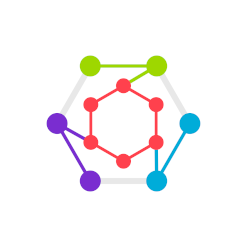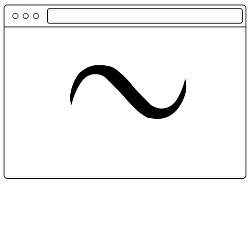new materials
scientific big data
open software
Scientific research and consulting for materials informatics
Materials informatics is a junction of materials science and computer science, focused on the data processing and analytics for the new materials. This includes the advanced software development, database-driven simulations, and automated screening of the scientific data.
Tilde Materials Informatics ® is a brand name for the materials informatics services offered by a consultant and independent researcher Dr. Evgeny Blokhin. Under the name of Tilde Materials Informatics ® the following services are provided:
- computational research for perspective materials,
- high-throughput database-driven simulations (e.g. ab initio),
- full-stack software development for the scientific data repositories.
Managing the big amounts of scientific data, sharing them online, automation of computational research — all these topics are the applications of materials informatics. Would you like to learn more? Then please get into contact.
Absolidix: new materials design cloud

This is an early preview of the on-demand cloud simulations of materials backed up by MPDS (Materials Platform for Data Science) and ICDD (International Centre for Diffraction Data). This cloud-native, ML-accelerated predictive platform, built on top of world's largest inorganic material databases and advanced quantum mechanical modeling, enables inverse and generative design of the new materials with targeted functionalities, optimized for real-world manufacturing across multiple sectors such as semiconductors and additive alloys. For research and industrial partners, it offers the clean fuel of reliable data and rapid simulation tools to accelerate their R&D, de-risks new material development, and unlocks a new generation of high-performance products, in months rather than decades. An online demo exemplifies some capabilities already developed however should not be considered as a ready product just yet.
Materials platform for data science

Materials platform for data science (MPDS) is an online version of the well-known commercial PAULING FILE materials database from Switzerland, curated since 1993 (backs up Springer Materials™, ICDD PDF-4™, ASM Alloy Phase Diagrams™, MedeA Materials Design™, Pearson's Crystal Data, AtomWork Advanced, etc.). More than two millions of data entries (phase diagrams, crystalline structures, and physical property values) are available for the download by subscription. The whole dataset is also available in machine-readable developer-friendly format via the REST API. The source of the data is about 500'000 peer-reviewed publications in materials science, processed by an international team of the expert editors. The results are presented online under the quick search interface. The basic access tier is and will be always free.
Metis: X-ray diffraction data platform

Metis was the collaboration with the X-ray crystallography laboratory of BASF SE (Ludwigshafen am Rhein, Germany). The X-ray diffraction is a powerful non-destructive experimental technique widely used for the characterization of the new materials. Here the focus was put on the automation, data organizing, online graphical user interfaces, and high-throughput cloud simulations. The capacity at the experimental beamlines was considerably increased through the automation of experiments for fast characterisation methods (via automated data analysis). The ultimate goal was to speed up the typical processes in an industrial X-ray diffraction research laboratory. See also more details in the STREAMLINE Horizon 2020 funded project description. In 2023, the project was successfully funded by the BASF SE business incubator Chemovator GmbH under the new name.
NoMaD: Novel Materials Discovery Repository

This project was the collaboration of Fritz Haber Institute of the Max Planck Society and Humboldt University of Berlin (Germany) with the aim to create an international ab initio materials science data repository called NoMaD. The database structure was designed, and the repository program core was implemented. In 2014 the first version of NoMaD was launched. In 2015, NoMaD project was successfully funded by European Union's infrastructure call for Centers of Excellence (CoE) in computational sciences.
Thermodynamics of defects in mixed conductors

Managed by the Physical Chemistry Department of the Max Planck Institute for Solid State Research (Stuttgart, Germany), this set of projects aimed fundamental understanding of diffusion processes in the fuel cells, i.e. chemical sources of electric current. While the operational temperatures of the solid oxide fuel cells reach 1000°K, the atomic vibrations have to be taken into account in the ab initio calculations of thermodynamic properties. This was done systematically for the series of defective perovskite systems, with the aid of the wide range of scientific software tools, written in Fortran, C, Shell, JavaScript, PHP, and Python programming languages. For details please refer to Blokhin, PhD thesis, Stuttgart University (2013).
Water adsorption on perovskite surfaces

The Quantum Chemistry Chair of St. Petersburg State University (Russia) had worked on several international grants by NATO, DFG, INTAS, and CRDF in fundamental research. One of the projects was to combine classical force-field and ab initio modeling techniques to describe water adsorption on the surfaces of SrXO3 perovskites (X = Ti, Zr, Hf), owing to its high technological importance. During this project, the number of utility software tools for data processing were created. For details please refer to Evarestov, Bandura, Blokhin, J. Phys. Conf. Ser. (2007) and Evarestov, Bandura, Blokhin, Surf. Sci. (2008).
Open-source software
Visualizes crystalline structures in various formats directly in the browser, allowing to embed them interactively on the webpages. See and re-use the source code freely.
The Optimade standard defines a unified access interface to various online materials databases. Using the Optimade standard, this web-client allows instant access to around a hundred of millions of the possible crystalline structures from dozens of online databases.
Many of our materials data repository engines, educational tutorials, and online graphical user interfaces are open-sourced under permissive licenses. Just take and use them as if they were yours.
Research and consulting

We explore the screening strategies for materials design using the artificial intelligence techniques, such as deep learning and semantic technologies. Let the advanced data analytics serve for materials.

You manage big amounts of scientific data or want to share data online? Or process your data heavily e.g. with Python? It is time to invest in your own data laboratory.

Full-stack software development for high-throughput database-driven ab initio modeling — it is actual, if you need to automatize and accelerate any parts of your computational research. Let's increase the efficiency of your R&D processes.



